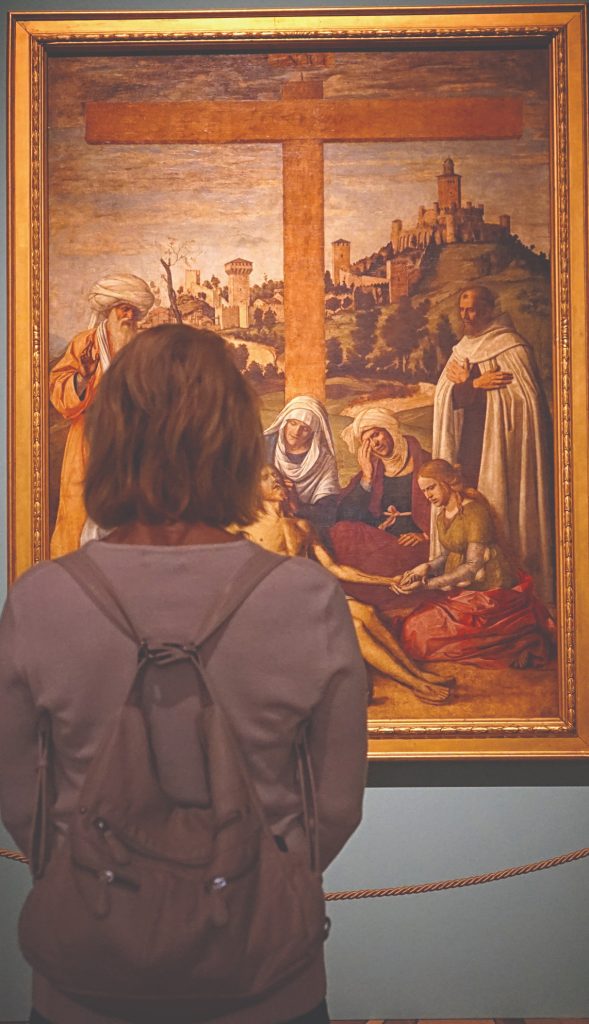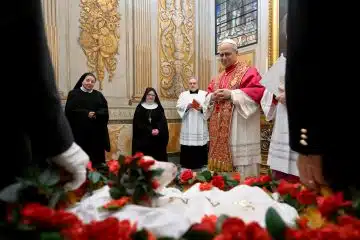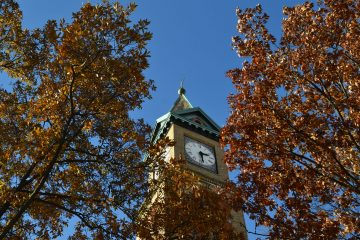A Closer Look: NO ATHEISTS IN ART GALLERIES
 When I taught theology to undergraduates, I would ask for a show of hands of those students who agreed with the statement, “Beauty is in the eye of the beholder.” In most cases, every hand went up, even from the most devout students. And my reply would be, “I didn’t realize I had a room full of atheists.” I would then ask how many agree with the statement “There is no such thing as beauty.” Inevitably, not a single hand would raise, to which I would respond, “Well, it looks like I have a classroom full of either confused atheists or misguided Christians.”
When I taught theology to undergraduates, I would ask for a show of hands of those students who agreed with the statement, “Beauty is in the eye of the beholder.” In most cases, every hand went up, even from the most devout students. And my reply would be, “I didn’t realize I had a room full of atheists.” I would then ask how many agree with the statement “There is no such thing as beauty.” Inevitably, not a single hand would raise, to which I would respond, “Well, it looks like I have a classroom full of either confused atheists or misguided Christians.”
This led to a lively discussion on the order of creation, the nature of art, the kinds of claims artists make and the role of beauty in moral and religious life. My goal was to illustrate that “beauty is in the eye of the beholder” is equivalent to the statement, “there is no such thing as beauty,” and that the latter is incompatible with belief in the God Christians worship and even with belief in objective good. In other words, “there is no such thing as beauty” is equivalent to “there is no such thing as truth.” None of my students would agree that there is no such thing as truth, even if they were confused about what truth is and the various ways it can be claimed – including through artistic expression.
What most of them really thought is that artistic tastes legitimately vary from person to person, which is true. But this is quite different from believing that beauty is merely the subjective opinion of the person observing the photograph, listening to the opera or reading the novel. If beauty is solely in the eye of the beholder, then judgments of artistic evaluation are nothing more than arbitrary assertions, divorced from any correspondence to truth and goodness outside the emotive preference of the observer. Often it took a lot of work to lead my students to this conclusion. For, like many of us, while most of them were confessed Christians, they were unclear about how their faith impacts the way we should think about beauty and art.
MORAL AND AESTHETIC TRUTHS
One cannot be a moral absolutist and an aesthetic relativist, because moral and aesthetic truths are based in the same order of creation that is fundamental to Christian faith. Expressions of beauty and morality are both participations in the mind of God and cannot exist separately from one another. If one rejects the reality of beauty, one necessarily rejects the reality of morality.
A corollary of this is that beauty, like moral truth, leads us toward God, who is its source. Just as we cannot affirm belief in God and deny objective beauty, neither can we affirm the reality of beauty and (consistently) deny the existence of God. Beauty, like morality, implies order and purpose in the world; and that order and purpose can only have one source: God.
This understanding of the correlation of beauty, morality, truth and order is at the heart of the conversion of one of the greatest theologians in the Christian tradition, St. Augustine.
In his Confessions, St. Augustine explains how he came to understand that quest for beauty is the quest for God, and that the latter cannot exist separately from the former. All creation is from you, God, he prayed, “O One and Only, from whom is all measure, O Most Beautiful, who give beautiful form to all things and set all things in order by your law.” To seek beauty is to seek God; to acknowledge beauty is to praise the God from whom it comes.
REVEALING THE BEAUTY AND MIND OF GOD
Of course, people can have rigorous, good- faith conversations – even arguments – about what painting, play or poem constitutes authentic beauty. But such a conversation must be in the context of an agreement that judgments of beauty are claims about the correspondence of the artistic expression with some order of beauty outside the work of art itself and the person who observes it. Beauty is not an abstract concept, but, rather, the name we give to human creative endeavors that, we believe, conform to standards of order and purpose – that reveal the beauty of the mind of God.
Now, one might note that many artists are professed atheists. Some even create art for the purpose of expressing their belief that there is no meaning to life, no order to the universe, no truth. But think about it: Even that artist wants you to believe that his vision of beauty (as well as morality) is the true vision. She wants her art to convince you that the assertion “there is no truth to which art corresponds” is a true assertion. In other words, all artistic assertions are assertions of truth claims. Like moral truth claims, they might be – and often are – false.
Ugliness is the privation of beauty, just as evil is the privation of good. But the search for beauty, like the moral quest, is the search for the God in whom beauty and morality are perfectly obtained. You might find a lot of confused people in art galleries, but you will find no atheists there.
 Dr. Kenneth Craycraft is an attorney and the James J. Gardner Family Chair of Moral Theology at Mount St. Mary’s Seminary & School of Theology. He holds a Ph.D. in moral theology from Boston College, and a J.D. from Duke University School of Law.
Dr. Kenneth Craycraft is an attorney and the James J. Gardner Family Chair of Moral Theology at Mount St. Mary’s Seminary & School of Theology. He holds a Ph.D. in moral theology from Boston College, and a J.D. from Duke University School of Law.
This article appeared in the February 2021 edition of The Catholic Telegraph Magazine. For your complimentary subscription, click here.













